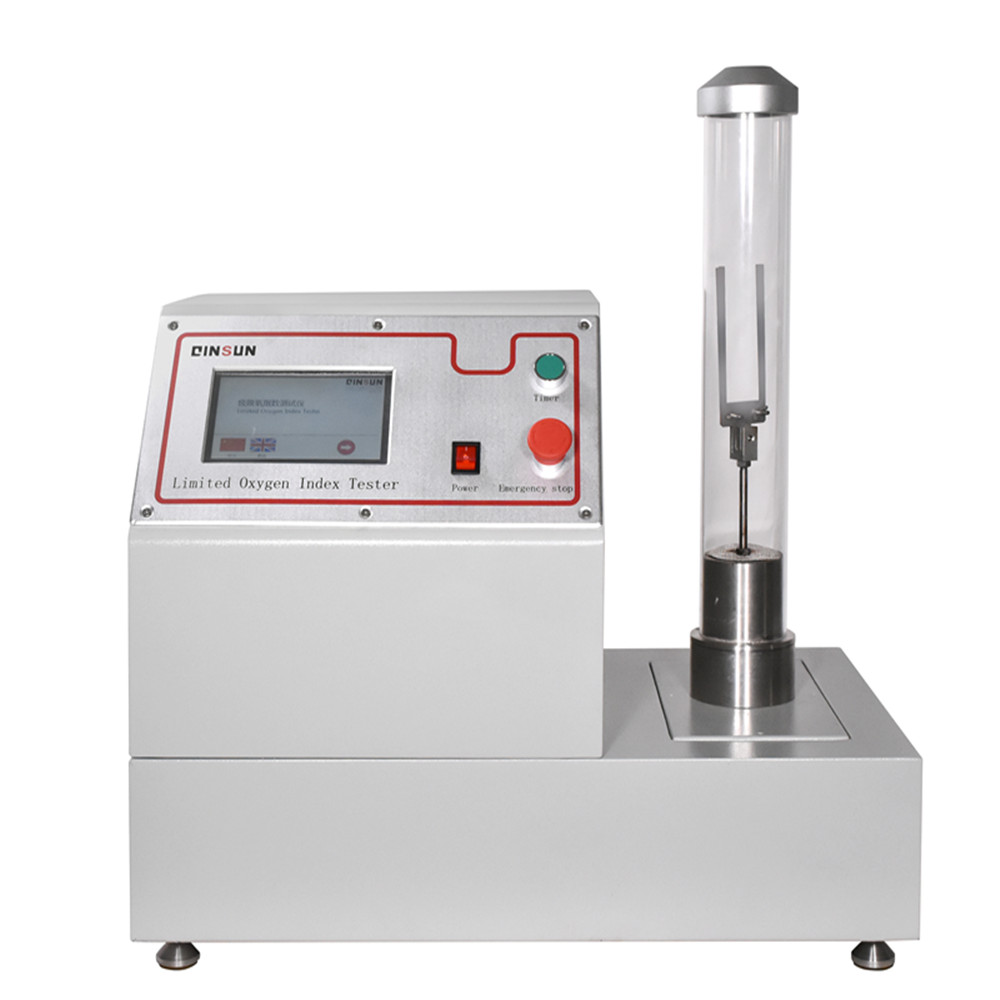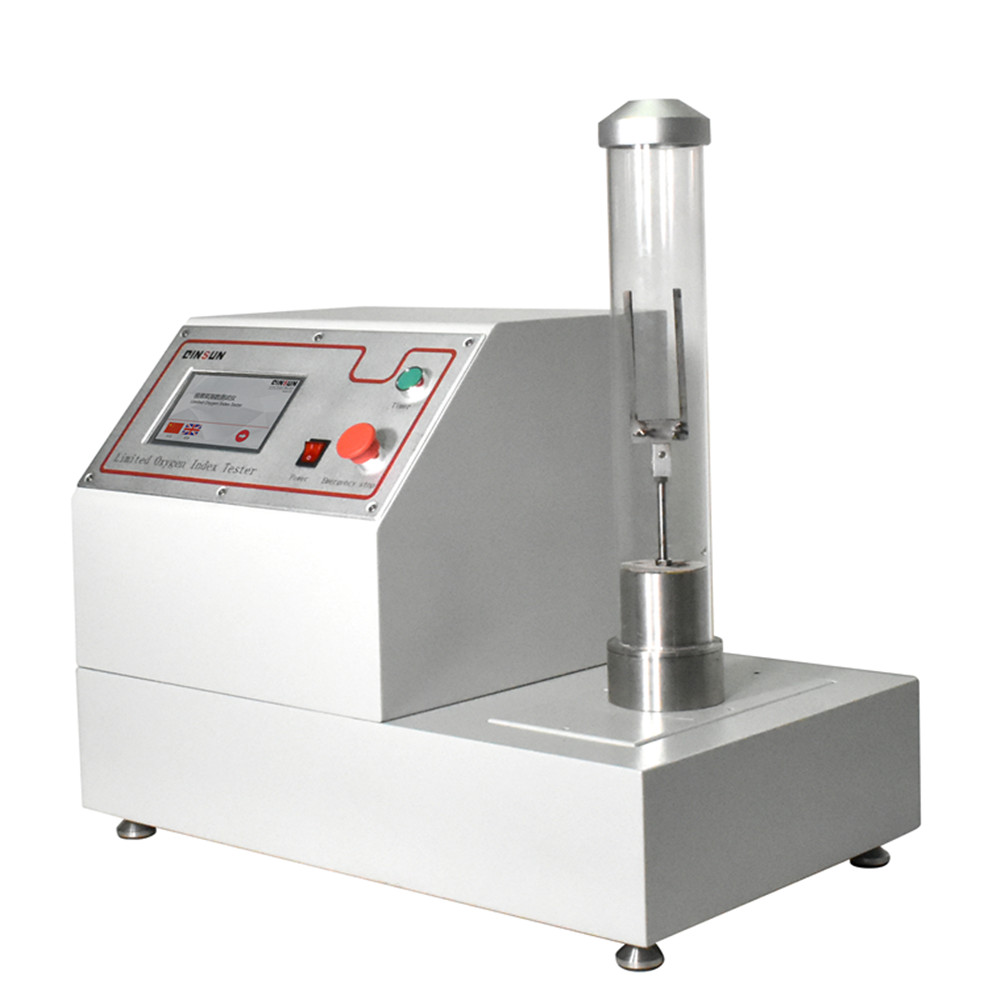Time: Popularity:0times
Understanding the Oxygen Index
The Oxygen Index (OI) stands as a pivotal metric in the realm of material science, specifically concerning flame retardancy. It is defined as the minimum volume percentage of oxygen required within an oxygen - nitrogen mixture to sustain stable combustion of a material under predetermined test conditions. This concept, introduced by American scientists Fenimore and Martin in 1966. has since gained global recognition as a standard for assessing a material's ability to resist burning.
The relationship between the OI and a material's flammability is straightforward: a higher OI implies a less flammable material, while a lower OI indicates greater flammability. Generally, materials with an OI below 22% are considered flammable, those between 22% and 27% are combustible, and those above 27% are flame - retardant.

The Oxygen Index test operates on a scientific yet simple premise. By adjusting the ratio of oxygen and nitrogen in a mixture, a test environment with varying oxygen concentrations is created. The objective is to determine the minimum oxygen concentration at which a material can sustain combustion.
A specimen is vertically mounted in a transparent glass combustion tube. A precisely controlled oxygen - nitrogen mixture is introduced from the bottom of the tube. An igniter is then used to ignite the top of the specimen, and its combustion behavior is closely observed. Key parameters such as whether the specimen burns for a specific time (e.g., 180 seconds) or a certain length (e.g., 50 mm) are recorded. Through a series of tests at different oxygen concentrations, the minimum oxygen concentration required for sustained combustion is identified.
Several major international standards govern Oxygen Index testing. ASTM D2863. established by the American Society for Testing and Materials, provides a widely - used set of guidelines. ISO 4589 - 2. from the International Organization for Standardization, is another globally recognized standard. In China, GB/T 2406.2 - 2009 serves as the national standard for Oxygen Index testing.
Based on the OI value, materials are classified into three flame retardancy levels:
Given that the oxygen concentration in Earth's atmosphere is approximately 21%, materials with an OI exceeding 21% will generally self - extinguish when removed from a fire source. Conversely, materials with an OI below 21% may continue to burn, posing a greater fire hazard.
The Oxygen Index is extensively used to evaluate the flame retardancy of various plastics. For instance, ABS plastic used in television casings and PVC pipes in construction must meet specific OI requirements to comply with fire safety standards.
In this industry, the Oxygen Index is crucial for flame - retardant textiles. Firefighter uniforms, aircraft seat fabrics, and children's pajamas are examples of products that require strict OI testing. Additionally, carpets, curtains, and other fabrics used in public places like hotels and airports must undergo OI testing to ensure compliance with building fire protection regulations.
Various board materials (such as flame - retardant density fiberboard and rock wool boards), coatings (fire - retardant coatings), and insulation materials (polystyrene foam and polyurethane foam) need OI testing to determine their flame retardancy levels, as specified in standards like GB 8624.
Materials used in electronics, such as circuit board substrates (e.g., FR - 4 epoxy resin boards), electronic device casings, and wire insulation, must pass OI testing to meet flame retardancy standards like UL 94.
These sectors have extremely stringent requirements for material flame retardancy. Aircraft interior materials (seats, ceiling panels) and cabin cable insulation must adhere to FAA or CAAC fire protection standards, with Oxygen Index measurement being a core testing item.
The Oxygen Index is also widely applied in rubber and elastomers, foam and sponge materials, chemicals, and military and defense materials.

Traditional Oxygen Index meters required manual adjustment of gas flow and calculation of oxygen concentration. However, modern equipment, such as Jiangsu Fellman's critical oxygen index meter, has incorporated advanced technology.
These modern devices feature imported oxygen sensors with an accuracy of ±0.1% and a digital display of oxygen concentration, eliminating the need for manual calculations. Automated functions include touchscreen programmable automatic oxygen concentration adjustment, one - touch calibration of accuracy, and one - touch concentration matching. These advancements significantly enhance testing efficiency and accuracy.
Moreover, the device automatically sounds an alarm when the oxygen concentration stabilizes and has a timer function that allows for the storage and review of historical test data. These technological developments make Oxygen Index testing more precise, efficient, and safer, providing a more reliable tool for evaluating the flame retardancy of materials.
In conclusion, the Oxygen Index is a fundamental parameter in assessing material flammability. Its wide - ranging applications across various industries, along with the continuous technological advancements in testing equipment, underscore its importance in ensuring material safety and fire prevention.
Company Phone
+86-21-6420 0566
Working hours
Monday to Friday
Mobile phone:
13816217984
Email:
info@qinsun-lab.com
